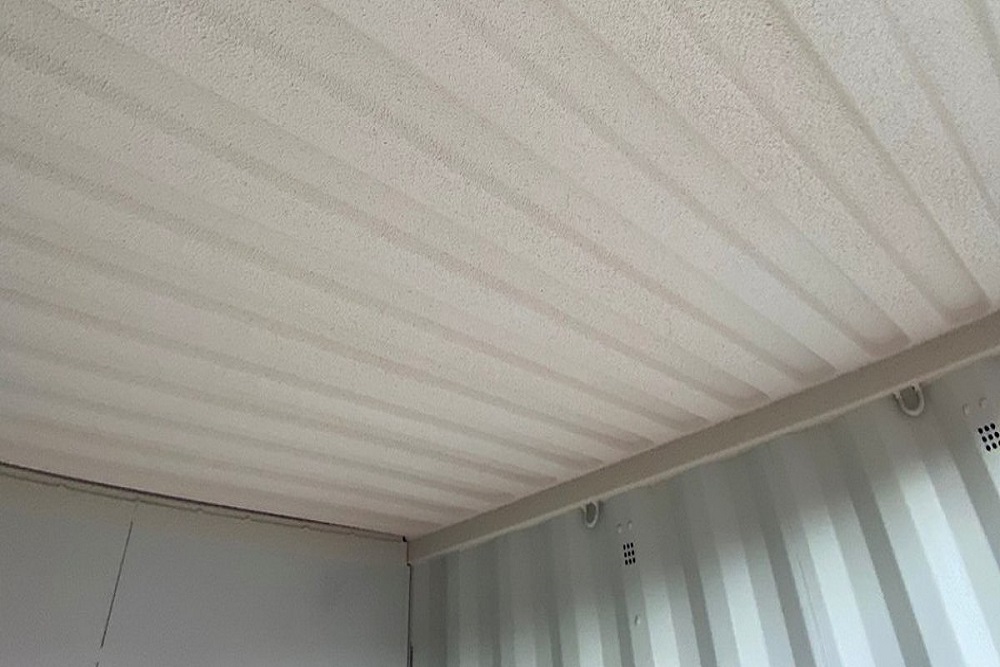
Have you ever stopped to consider how humidity and temperature affect shipping containers? If not, you certainly are not alone. Most people see a shipping container and simply think of it as a sturdy, practical mode of transport - and they’re not wrong. But the way temperature and humidity react inside these containers is an overlooked secret that could make a critical difference to the condition and quality of your goods. As an ardent interior designer or home improvement enthusiast, wouldn’t you be intrigued to dig deeper and learn more about this practically invisible but crucial aspect?
When faced with a condensation issue, instead of considering those ubiquitous damp rid buckets or silicate sachets, why not explore the fundamentals of what's actually creating that condensation? What outcomes could this knowledge deliver for your shipping container selections or modifications? In this blog, we will explore how the relationship between temperature, humidity and condensation can have significant implications for the long-term preservation and safety of your shipping container’s contents.
The Science of Condensation in Shipping Containers
The first step towards understanding how temperature and humidity influence shipping container condensation, we must first understand what precisely condensation is and why it happens. Condensation occurs when warm, moist air comes into contact with a cooler surface, causing the moisture in the air to condense and form droplets of water. This is exactly what happens within shipping containers, especially during transit, when outside weather conditions can fluctuate dramatically. These variations in temperature, added to the inherent humidity of the contents inside, can result in condensation, potentially causing damage to the interior of containers and their contents.
Why Do Temperature and Humidity Matter?
Why do these two factors, temperature and humidity, play such a significant role in container condensation? Temperature impacts the amount of moisture air can hold. Warmer air can carry more moisture than cooler air. The level of moisture in the air – humidity – is directly related to condensation. The higher the humidity, the greater the chance condensation will occur. So, understanding and managing these elements can significantly reduce the potential for condensation issues in your shipping container.
Preventing Container Condensation: Is It Possible?
Now that we understand the why and how of condensation, it's time to identify if it is possible to prevent it. Insulation is a frequently used method to keep a container's interior temperature in check. However, the effectiveness of this method hinges substantially on the type of insulation used and the level of humidity inside the container. Therefore, a more holistic approach involving ventilation, dehumidification, and desiccant usage may prove to be beneficial.
The Pros and Cons of Container Condensation Management Techniques.
To make things simpler, let's explore the pros and cons of some common condensation management techniques adapted for containers. Whilst insulation can keep the inner temperature steady, it doesn't combat humidity. On the other hand, mechanical ventilation provides an outlet for the humid air but can invite unwanted external temperature fluctuations. Desiccants, an important tool used to absorb moisture, can be handy but one needs to consider their sustainability and replacement frequency.

Effective Solutions to Container Condensation Worries.
There are indeed effective and practical ways to dissipate condensation worries. Some of these include using anti-condensation paint, installing dehumidifiers, or specifying roof-mounted vents. But ultimately, the success of any approach stems from having a comprehensive understanding of the temperature and humidity behaviour inside containers.
Temperature, Humidity and Shipping Containers - Arguably A Success Trio?
Inasmuch as one thinks of containers and logistics, perhaps it is time to consider containers, temperature and humidity as an arguable triumvirate ensuring safe cargo transport. Manage these aspects effectively, and you're paving the way towards successful, worry-free container usage.
Conclusion
In our exploration of the impact of temperature and humidity on shipping container condensation, we've uncovered quite a few enlightening facts. We've dived into the why and how of condensation, pointing out the significance of temperature and humidity management. We've also explored prevention methods, their pros and cons, and learnt of effective, practical solutions to container condensation.
The more we understand these natural phenomena, the more equipped we'll be to manage them effectively in our shipping containers. With knowledge as our primary tool, we can confidently transform the everyday shipping container into an optimised, reliable mode of cargo transport. Quite fascinating, isn’t it, how understanding the interplay of temperature, humidity and containers can stand us in good stead towards a successful shipping container experience.











No comments:
Post a Comment